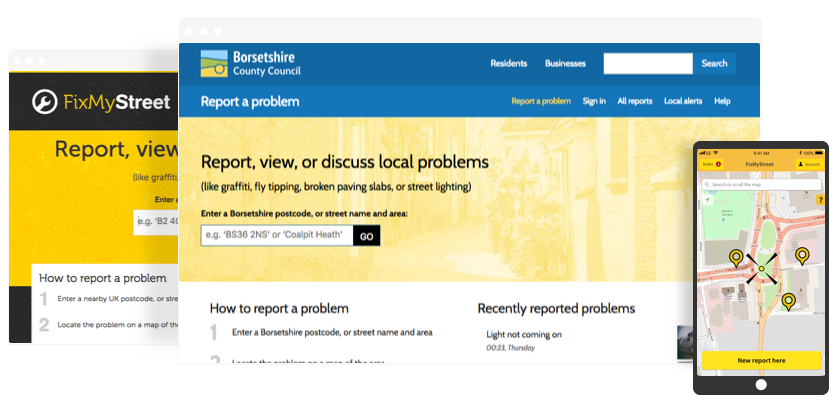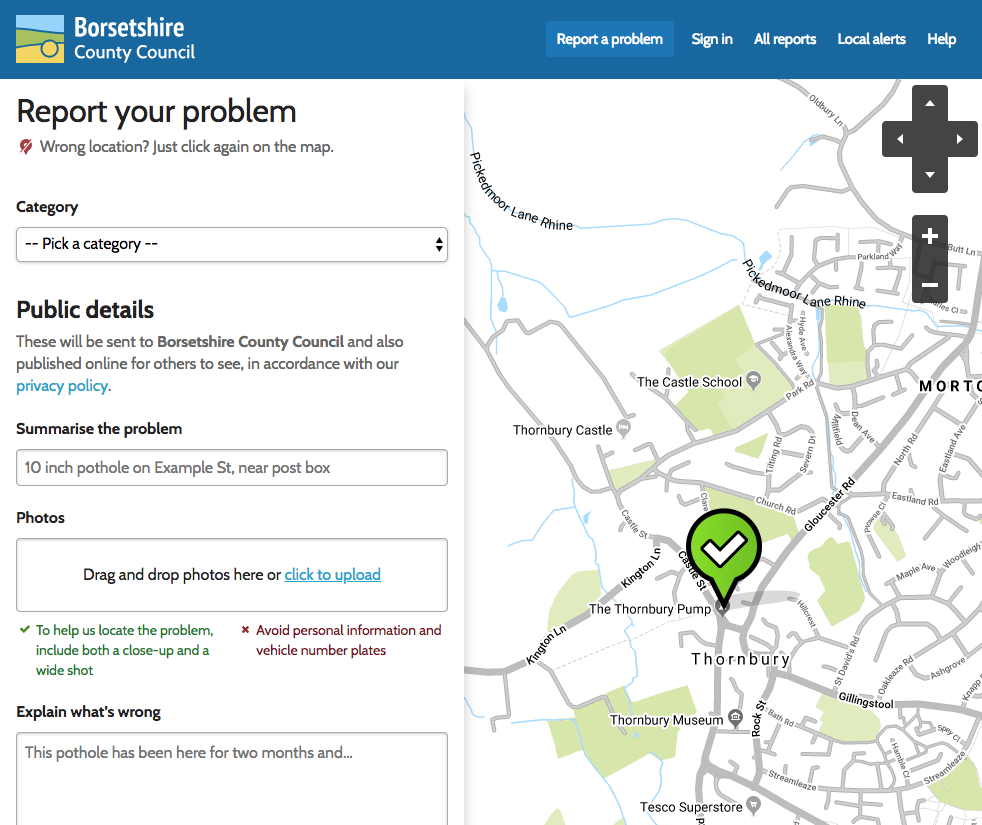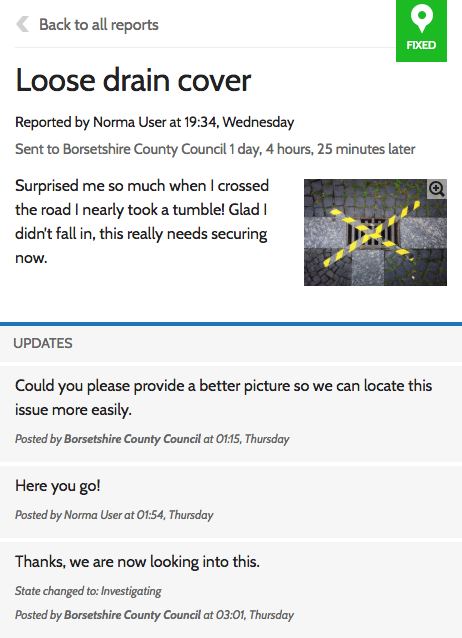The citizen’s experience
Before we can fully explore FixMyStreet Pro’s tools for council staff, it’s important to understand the report-making process from the citizen’s point of view.
Here’s a brief look at how a citizen’s experience when reporting an issue located within the boundaries of a council using FixMyStreet Pro.
Making a report
Where to report
When a citizen sees a problem and wishes to report it, they can do so in one of three places:

- Through the council website, on the council’s branded FixMyStreet instance
- On FixMyStreet.com, the UK-wide site
- Via the FixMyStreet app
No matter which of these channels they use, the report will be visible in all three places. All FixMyStreet instances draw from the same database of reports.
The FixMyStreet website, and the council’s branded version, can also be installed as a ‘web app’ – providing a logo on their homescreen that users can treat like a native app without the hassle of app stores. If that’s something that would be of interest for your installation, please get in touch.
What if a user makes a report on the council site, but it’s the responsibility of a different authority?
That’s fine: FixMyStreet will simply channel it to the correct authority. If it’s within your council boundaries (so, if you are within a two- or three-tier area, and the report category is handled by a different council) the report will still show on the map, but it won’t go into your workflow.
If a user attempts to make a report in a location outside your council boundaries, they’re guided to the main FixMyStreet website.
Identifying the report location

FixMyStreet’s start page invites the resident to search for the location of their issue, by entering any part of an address, for example a street name or postcode. Alternatively they can allow the site to identify their location automatically.
They’re then taken to a map, centred on this location. The user can pan and zoom the map until they find the exact position of the issue they are reporting. Councils on the ‘Avenue’ price tier may choose to include GIS data showing assets such as streetlights or trees which may enable further accuracy.

All reports are published online, so at this stage, citizens can see if their issue has already been reported. If they find an existing report they may choose to add an update instead of making their own report.
If not, they place a pin on the map and make their report.

They are asked for:
- A category, selected from those provided by the council
- A title
- A description
- Their contact details (if they have previously registered, these do not need to be re-entered)
- Any other information that the council has stipulated as a requirement, eg for potholes you may add a field which asks for the dimensions.
If the user is not registered or logged in, they may confirm their report by email. Note that although it is obligatory to include a name and contact details, the user may opt for their name not to be shown on the public report page. Of course, their other contact details are only sent to the council and are never made public.
Receiving a response

Responses from the council come directly back to the user, via the email address they used to make the report. Where councils have opted for full integration with FixMyStreet Pro, responses may also be posted as automatic updates on the report. Responses may take the form of a request for further information or an update on the status of the issue.
Updates from other users
FixMyStreet reports are public, and other users may also add updates. This creates an informal community forum, and also provides a useful way for the council to understand which issues have the highest visibility or create the most dissatisfaction among residents. Any updates on a report are sent by email to the report maker, unless they opt out.
Subscribing to alerts

FixMyStreet users can sign up to receive an email every time a report is made within a specified area. This can be useful for anyone who wants to keep an eye on issues within their neighbourhood: it’s often used by councillors, community groups, journalists and neighbourhood policing teams, as well as by residents.
To set up an email alert, click on ‘Local alerts’ in the top menu bar. Input a postcode or place name and you’ll be offered a range of options: you can subscribe to every report made within the entire council area; every report made within a particular ward; or within an area roughly covering a population of 200,000 people (the size of this area varies with population density). Staff need not normally do this, as they will be working in the reports interface daily, and will be aware of issues as they arise.